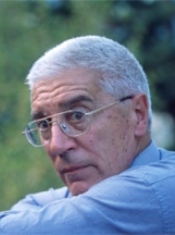

Jacopo Tomasi

Born September 14, 1934 in Diano Marina, Italy.
Professore Ordinario di Chimica Teorica, Universitá di Pisa, Italy.
Email:tomasi@dcci.unipi.it
WWW: external link
Author of:
About 250 scientific papers. One book.
Important Contributions:
- Elaboration of methods for the calculation and interpretation of the properties of isolated and interacting molecules, and of chemical reaction mechanisms at the Hartree-Fock and correlated levels of the theory. To this end use has been made of many techniques and concepts, some expressly introduced in the literature: molecular electrostatic potential, molecular electrostatic polarization function, molecular electric field, decomposition of the inter- and intra-molecular interactions into terms with a well defined physical interpretation and based on the decomposition of the molecular systems into smaller subunits. Analysis of the degree of transferability of such subunits and interpretation and modeling of the changes due to the chemical environment.
- Elaboration of methods for the calculation and interpretation of photophysical and photochemical phenomena using again a variety of methods and of new concepts making easier the analysis of the interactions between the chromophore and the other subunits.
- The final goal of these studies has been of expressing a unifying methodological framework for the interpretation of phenomena of chemical interest in terms of classical interactions among subunits, complemented and modified by true quantum effects.
- Elaboration of a model to describe solvent effects at a good level of accuracy to be used in combination with quantum descriptions of the solute at all the levels of the molecular quantum theory.
- Extensions of this model to other condensed phases and applications to the study of: intermolecular interactions, reaction mechanisms, solvent effects on the structural, dynamical and chemical properties of molecular systems, electric, magnetic, and chiral response functions of molecules and larger bodies, electronic processes.